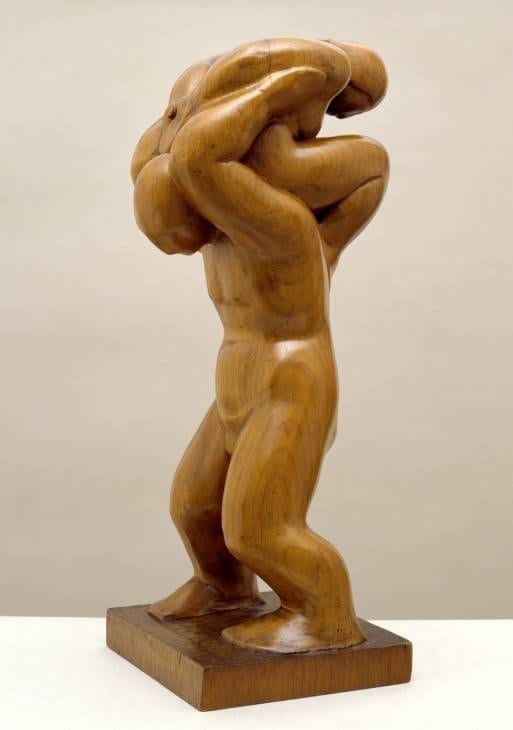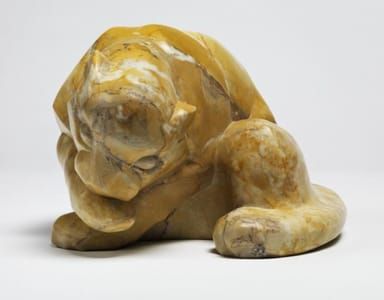

The Acrobats, 1927
Alan L. Durst
During the 1920s Alan Durst made several sculptures of acrobats and tumblers. Like the dancer motif so commonly found in the work of other avant-garde sculptors of the early twentieth century, this subject allowed for considerable formal invention within a clearly figurative idiom. In The Acrobats a naked man carries a naked woman on his shoulders. From this unusual arrangement emerges a sculpture of considerable formal interest. Looking at the sculpture from the side, a rhythmic line rises from the sturdy bent legs of the man through his body and that of the woman. From the front, the zigzag of advancing and receding planes gives it great formal dynamism.
In part, the composition and execution of The Acrobats is indebted to the West African carvings that Durst had seen at the British Museum and elsewhere. There is a clear correspondence, for example, between the massive, stocky legs of the male figure and Fang figurative sculpture. Likewise, the method of carving directly into the block of wood without intermediary stages was associated with primitivised practices. During the 1920s, Durst with Henry Moore (1898-1986), John Skeaping (1901-80), Barbara Hepworth (1903-75) and Maurice Lambert (1901-64), was one of the leading exponents of direct carving in Britain. Working without models or maquettes, Durst attacked the cubic block of cedar wood on each of its four sides, roughing out the basic design. Gradually he refined the sculpture into its finished state, leaving only the stand as a remnant of its original shape. This hands-on approach to sculpture has often been considered as part of a normally superior craft aesthetic opposed to the fragmentation of labour that had characterised much nineteenth century sculpture.
The Acrobats is one of very few examples of Durst's wood carving to have survived. It was first exhibited with the London Group in 1927 and the next year travelled to Buenos Aires where it was included in an exhibition of contemporary British art. In November of 1928 it was shown at the Sydney Burney Gallery and then at Durst’s one man exhibition at the Leicester Galleries in 1930, where it was exhibited with Girl Binding Her Hair, 1929 (Tate T00722), among other works.
Toby Treves, revised by Heather Birchall
October 2002
(http://www.tate.org.uk/art/artworks/durst-the-acrobats-t07903/text-summary)
Uploaded on Jul 20, 2016 by Suzan Hamer
Alan L. Durst
artworksArthur
Wait what?


